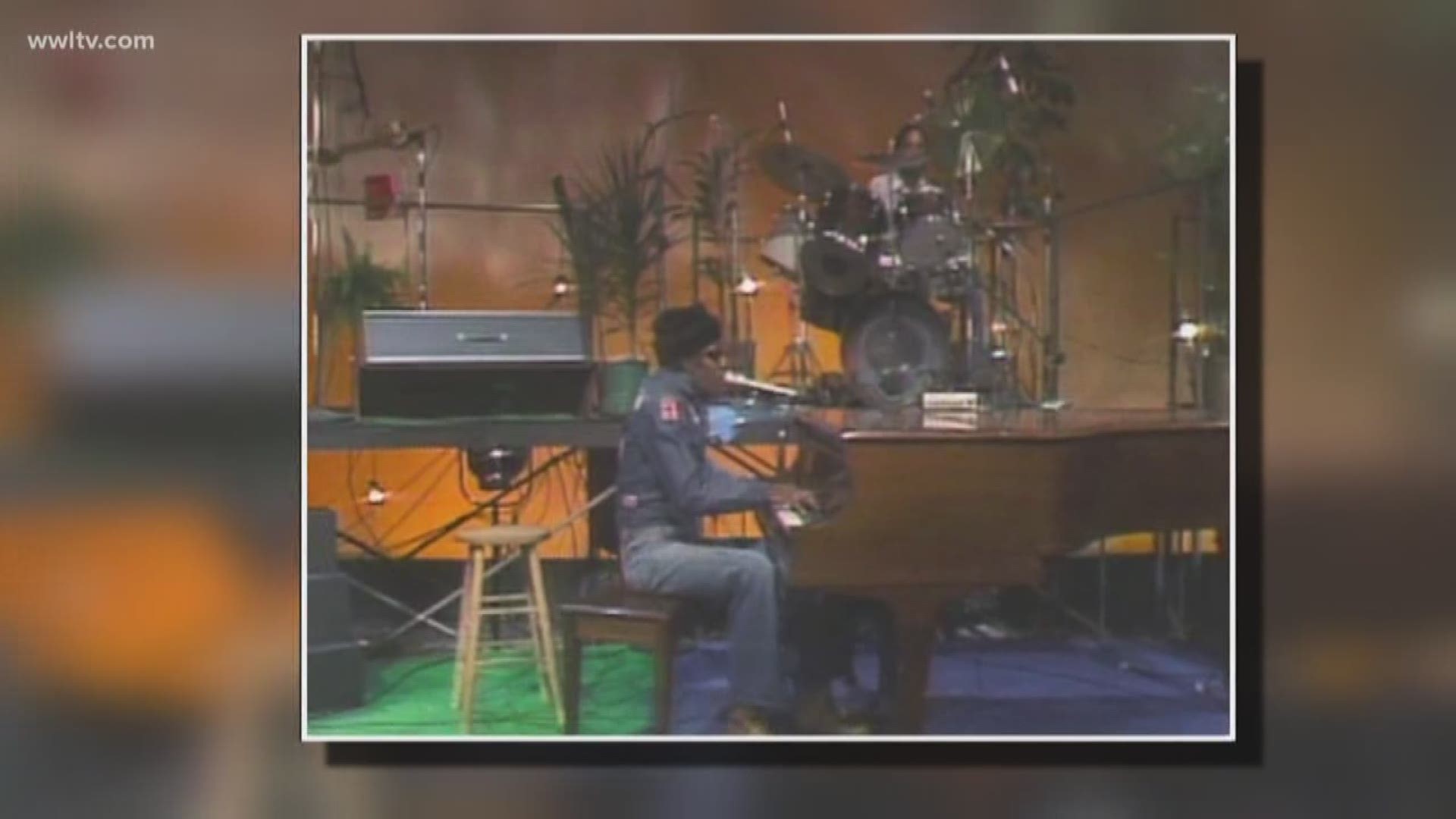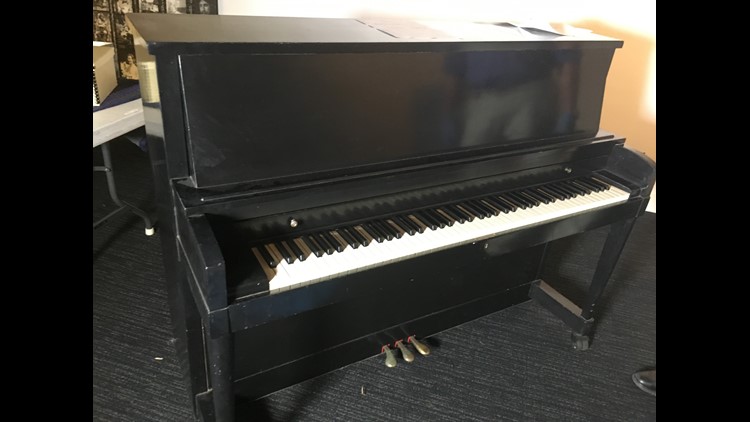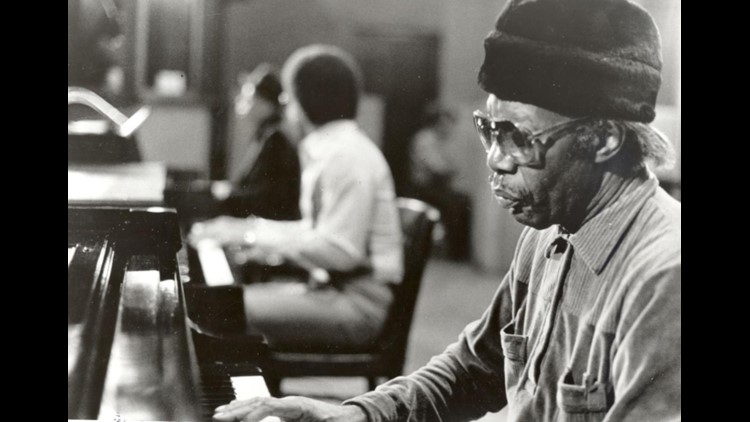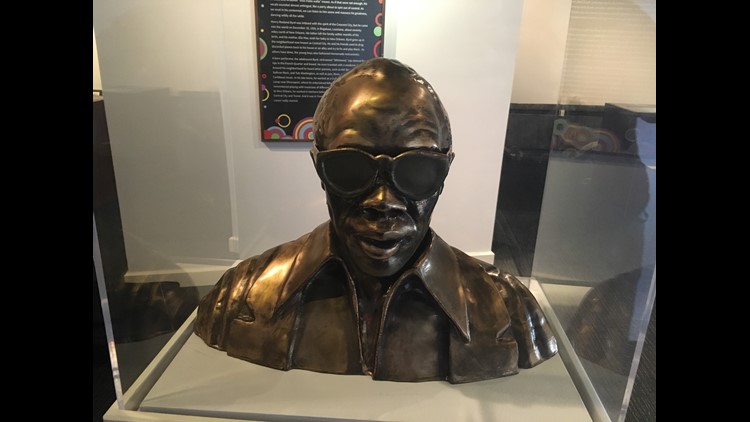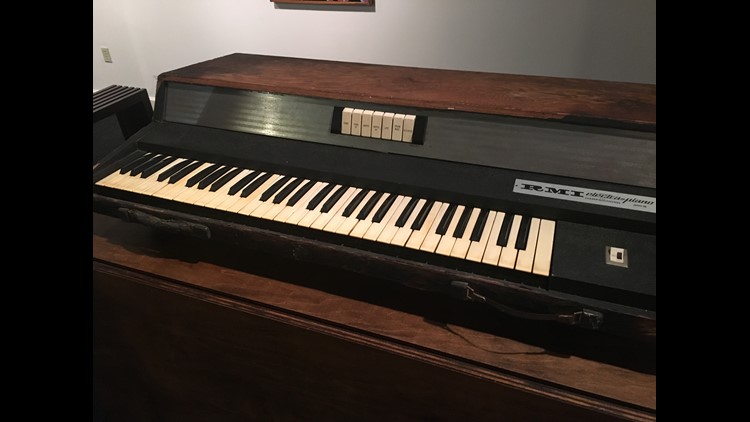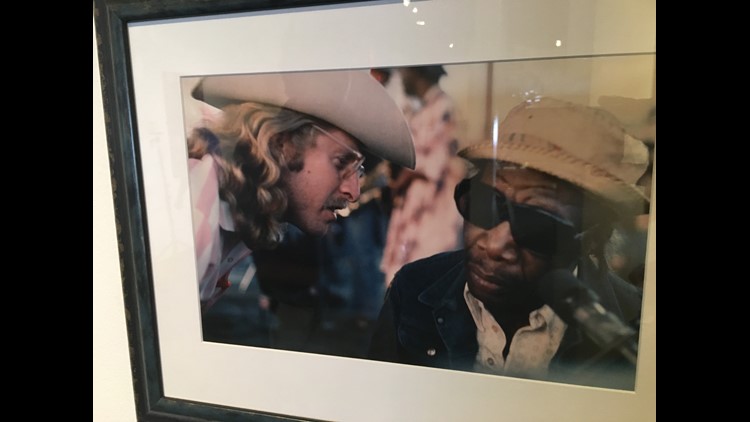To many, he is the sound of New Orleans. He was born Henry Roeland Byrd 100 years ago this December, but the world knows him better as Professor Longhair.
David Kunian knows why his music is so special.
“Professor Longhair invented an entirely new way to play the piano because of the way he came up, because of what was in his head. He kind of combines a rhythm and blues, and a blues thing with it and yet it's kind of a Caribbean rhythm and New Orleans attitude behind it,” Kunian said.
Kunian is the curator of a new exhibit at the New Orleans Jazz Museum at the Old U.S. Mint, called “Me Got Fiyo: The Professor Longhair Centennial.” It features photographs, artifacts, and even one of his keyboards – all celebrating Fess’ musical legacy.
The first question some might ask: why the name? “He had long hair and he got a job in 1948 or 1949 at the Caledonia Club where Mike Tessitore was the owner and he noted that Fess had longer hair. So he started calling him ‘Longhair,’ so he got this nickname of Longhair, and then professor was a compliment to pianists since the Storyville days, so he got called Professor Longhair,” Kunian explained.
Ironically, Professor Longhair's first big hit, recorded in 1950, was a song called "Bald Head." Other hits were hard to come by, though he did record two songs which became Carnival classics: “Big Chief" (written by Earl King) and "Go to the Mardi Gras."
Exhibit honors Professor Longhair's legacy
Another iconic Fess song is "Tipitina," recorded in 1953. Its origins and meaning are murky, but it remains a classic and it's a perfect example of lyrics that make no sense to some, but perfect sense to Fess. “You can kind of figure it out because the sound of the words very much sound like what they mean,” Kunian said, “but if someone said would you please define ‘Oola malla walla’ for me, you would have a tough time precisely defining it.”
In the 1960s, Longhair fell on hard times, picked up odd jobs in clubs and ran a gambling operation until a new group of fans including Jazz Fest producers Quint Davis and Allison Miner rediscovered him. “And then he plays the Jazz Fest 1971 that we have footage of in the exhibit and everyone's like wow! Everyone knows the music but no one really had thought about that there was a person behind it and everyone was like, ‘Oh my God, he's still here,’” Kunian said.
Fess's comeback included new albums, European tours and gigs - including for a group of friends who opened a club on Tchoupitoulas street, so he'd have a permanent place to play. Formerly known as the 501 Club, they called it Tipitina's and when he died in 1980, it became a shrine to the man and the generations of musicians he influenced. One of Longhair’s pianos from Tipitina's is in the exhibit
“All the piano players who came after him, he influenced. They either did his songs or they played, took things from him,” Kunian said.
“In the best of ways he messed with everybody’s heads for years in terms of how they played or how they thought about New Orleans music. And really changed the music of New Orleans forever, you can’t deal with New Orleans music or play it, think about it, without thinking about Professor Longhair,” Kunian said.
“Me Got Fiyo: The Professor Longhair Centennial” is now open at the New Orleans Jazz Museum at the Old U.S. Mint, 400 Esplanade Ave. It is on display until July 2019.
Museum admission is $6.00 for adults; $5.00 for students with I.D., senior citizens (65+) and members of the military. For more information, call 504-568-2566 or visit www.nolajazzmuseum.org.
Longhair is also featured in a new DVD release, Fess Up, which features filmmaker Stevenson Palfi's 1982 documentary "Piano Players Rarely Ever Play Together." It features Fess performing alongside Allen Toussaint and his mentor Tuts Washington. The new DVD also includes a ninety-five-minute interview with Longhair, recorded just two days before his death.

